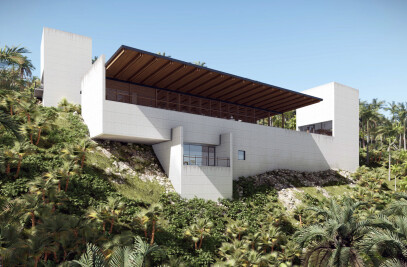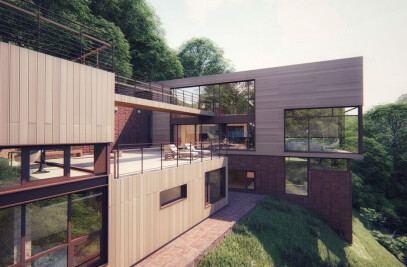The house and studio for a Visual Artist and his fiancee, respond to a series of themes such as the relationship with the physical context, the needs of the client, security and a limited budget. For this project, six options were analyzed at the schematic design level that sought to control the wind that comes from the northeast and that occurs in the first months of the year with greater intensity, the sun and the quality of light that enters the building, as well as its cost, energy, and specific operating expenses.
Through the use of various design performance tools and technologies such as Fluid Dynamics, Energy Consumption Analysis Material Life Cycle Assessment, and Climate Analysis” the existing conditions were reproduced in order to identify the best sustainability strategies. In this way, the building is self-sufficient and will provide the site with an aquifer recharge that does not exist at the moment.
The main masses distributed around a courtyard surround the complex creating a construction closed to the outside and moderately open towards the interior. In the patio is the Huizache tree, typical tree of the area, surrounded by a mirror of water that refreshes and forms a central part of this area.
There are three main volumes that make up the house, these are oriented at different angles that seek to frame and highlight different views for each area.
We want there to establish a deep relation with the site and for that, we believe it is necessary to include the open space of the patio as the main circulation stratagem. The patio serves as a refuge from the intense wind, connection to the sky, and a night sky observatory.

































